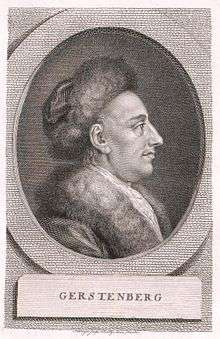Tønder
| Tønder | ||
|---|---|---|
 Market square | ||
| ||
 Tønder | ||
| Coordinates: 54°56′34″N 8°51′50″E / 54.94278°N 8.86389°ECoordinates: 54°56′34″N 8°51′50″E / 54.94278°N 8.86389°E | ||
| Country | Denmark | |
| Region | Southern Denmark (Syddanmark) | |
| Municipality | Tønder | |
| Population (2016) | ||
| • Total | 7,587 | |
| Time zone | UTC+1 (Central Europe Time) | |
| • Summer (DST) | UTC+2 | |
| Postal code | 6270 | |
Tønder (German: Tondern) is a town in the Region of Southern Denmark. With a population of 7,595 (as of 1 January 2014),[1] it is the main town and the administrative seat of the Tønder Municipality.
History
The first mention of Tønder might have been in the mid-12th century, when the Arab geographer Muhammad al-Idrisi mentioned the landmark Tu(r)ndira, which might have been a reference to either Tønder, or the nearby town of Møgeltønder.
Tønder was granted port privileges by the Hanseatic League in 1243, making it Denmark's oldest privileged market town. In 1532 it was hit by severe floods, with water levels reaching 1.8 m in St Laurent's church, 5.3 m above sea level. In the 1550s, Tønder's port lost direct access to the sea due to dykes being built to the west of town at the direction of Duke Hans the Elder of Schleswig-Holstein-Haderslev, the son of Frederick I of Denmark.
The town center is dominated by houses from the late 17th and early 18th century, when the town experienced rapid growth as a result of its lace industry. Prior to 1864, Tønder was situated in the Duchy of Schleswig, so its history is intertwined with the contentious history of Schleswig-Holstein. In the 1920s, when the Schleswig Plebiscite incorporated Northern Schleswig into Denmark, 76.5% of Tønder's inhabitants voted to remain part of Germany and 23.5% voted to join Denmark.[2]
During World War I, a Zeppelin base was operated in Tønder by the Imperial German Navy. The base was attacked by the British on 19 July 1918, in what is known as the Tondern raid. Seven Sopwith Camels from the aircraft carrier HMS Furious bombed the base, hitting two of the three airship hangars. The Zeppelins L.54 and L.60 inside one hangar were destroyed and a balloon inside the other was damaged. After this, Tønder was abandoned as an active airship base, and was used only as an emergency landing site. A wartime aircraft hangar survives, as do some of the ancillary buildings, but only the foundations remain of the large airship hangars. The site now houses a museum, named the Zeppelin and Garrison Museum Tønder.[3]
After the First World War, Tønder was detached from Germany in spite of the majority of its population casting a pro-German vote in the Schleswig Plebiscites - as Tønder was included in Zone I, which as a whole had a strong pro-Danish majority. In the years that followed, German political parties enjoyed a majority in the city council, and until 1945, the city was officially bilingual.
After the end of the German occupation of Denmark, the political influence of the German population dwindled considerably. In spite of the improvement in cross-border traffic, the location of the town continued to hamper industrial growth through the late 20th century, although some companies did set up businesses. Tourism has grown in importance. In 1989, Tønder Seminarium, the oldest teacher training college in Scandinavia, established in 1788, was closed[4].
Attractions

Every August, the Tønder Festival offers visitors a wide variety of traditional and modern folk music. The Scouts of Tønder are twinned with Hemyock, in Devon, England, and make exchange trips between the countries every few years.
Marriage
In the last few years, Tønder has been growing into a notable wedding marriages per year. This is in part due to Denmark's liberal marriage laws, especially between to non-European/European couples. Compared to three months administration time in Germany, Denmark instead requires just around a week, fewer documents and the vows can be done in languages other than Danish.[5]
Notable people from Tønder


- Oluf Gerhard Tychsen (1734-1815) a German Orientalist and Hebrew scholar, a founding father of Islamic numismatics
- Heinrich Wilhelm von Gerstenberg (1737–1823) a German poet [6] and critic.
- Johan Christian Fabricius (1745–1808) a Danish zoologist, specialising in "Insecta", arthropods: insects, arachnids and crustaceans
- Nicolai Andresen (1781–1861) a Norwegian merchant, banker and member of Stortinget
- Geskel Saloman (1821–1902) a Danish–Swedish portrait and genre painter
- Julius Bahnsen (1830–1881) a German philosopher, originator of characterology
- Gustav Adolf Neuber (1850–1932) a German surgeon
- Jannik Petersen Bjerrum (1851–1920) a Danish ophthalmologist from Skærbæk, did pathogenetic research of glaucoma
- Bernhard M. Jacobsen (1862–1936) emigrated in 1876, became a U.S. Representative from Iowa
- Captain Max Valentiner (1883–1949) a German U-boat commander during World War I
- Svend Wiig Hansen (1922–1997) a Danish sculptor and painter from Møgeltønder
- Poul Schlüter (born 1929) a Danish politician, Prime Minister of Denmark 1982-1993
- Henning Munk Jensen (born 1947) a Danish former association football player, played 392 games for AaB and 62 matches for the Denmark national football team 1966-1978, 24 of these as team captain.
- Jan Beyer Schmidt-Sørensen (born 1958) a Danish economist and Director of Business Development at Aarhus Municipality
- Jakob Michelsen (born 1980) a Danish unattached football manager.
See also
References
- ↑ "Population 1. January by urban areas (DISCONTINUED) - StatBank Denmark - data and statistics". Statistikbanken.dk. Retrieved 15 December 2017.
- ↑ "Nach der Volksabstimmung" (in German). Deutsches Historisches Museum. Archived from the original on 4 February 2012.
- ↑ "The Zeppelin base in Tønder". Zeppelin and Garrison Museum Tønder. Retrieved 7 October 2010.
- ↑ "03c04-Oestergade63.html". Museum-sonderjylland.dk. Retrieved 15 December 2017.
- ↑ Saeed, Saim. "Love me Tønder: Europe's quickie wedding destination". Politico Europe. Retrieved 7 September 2016.
- ↑ 1911 Encyclopædia Britannica, Volume 11, Gerstenberg, Heinrich Wilhelm von retrieved 23 March 2018
External links
![]()
